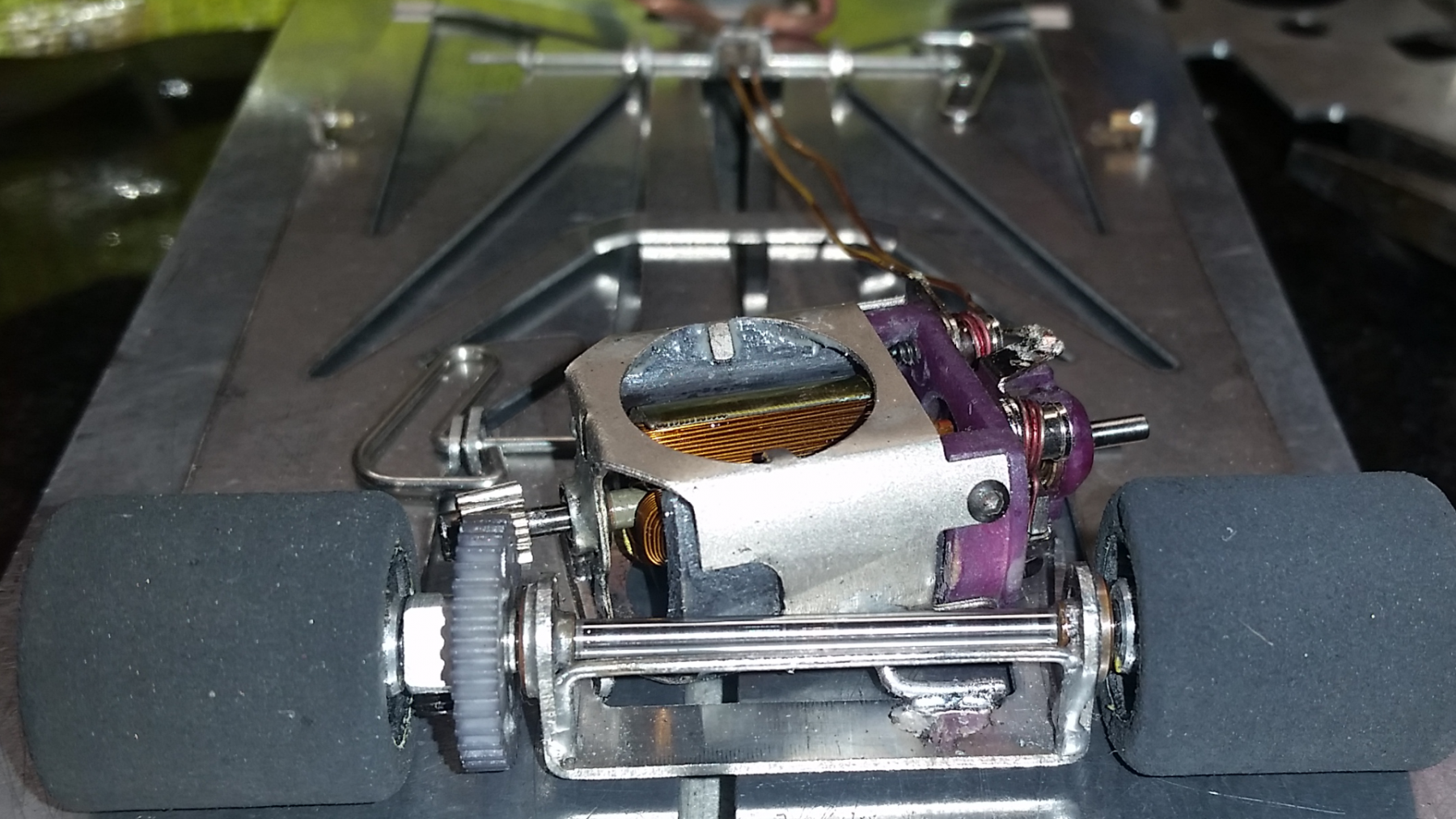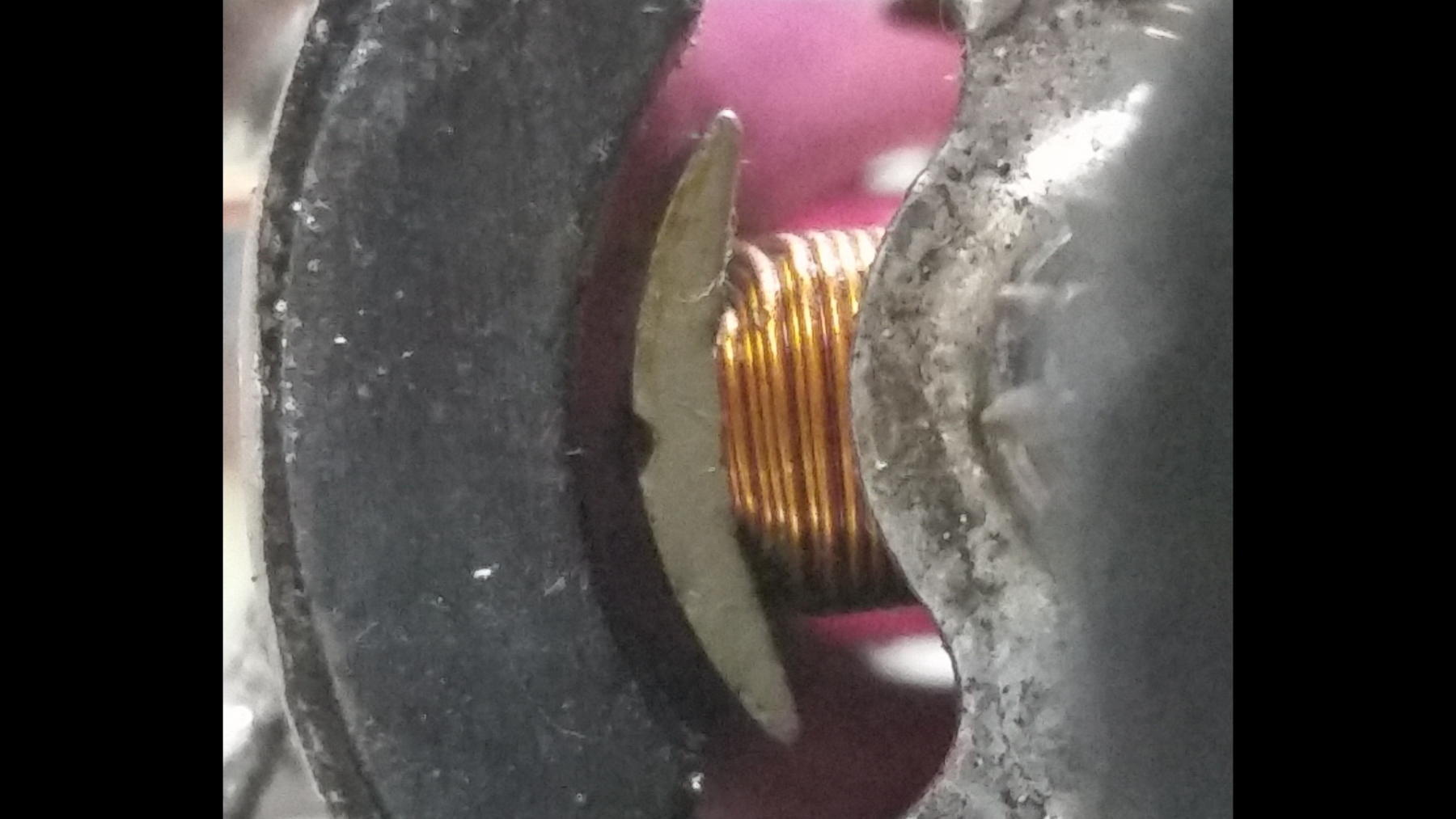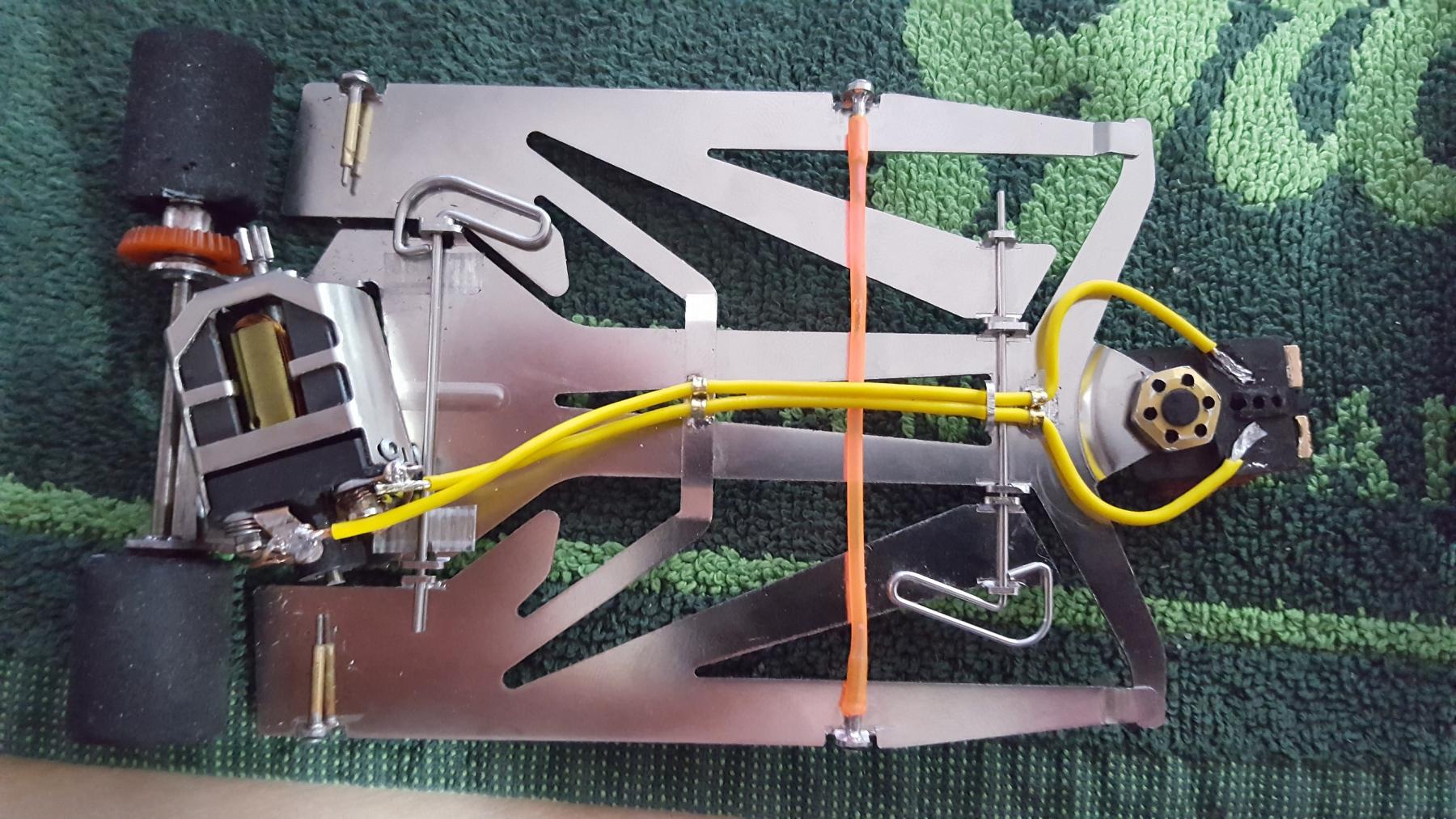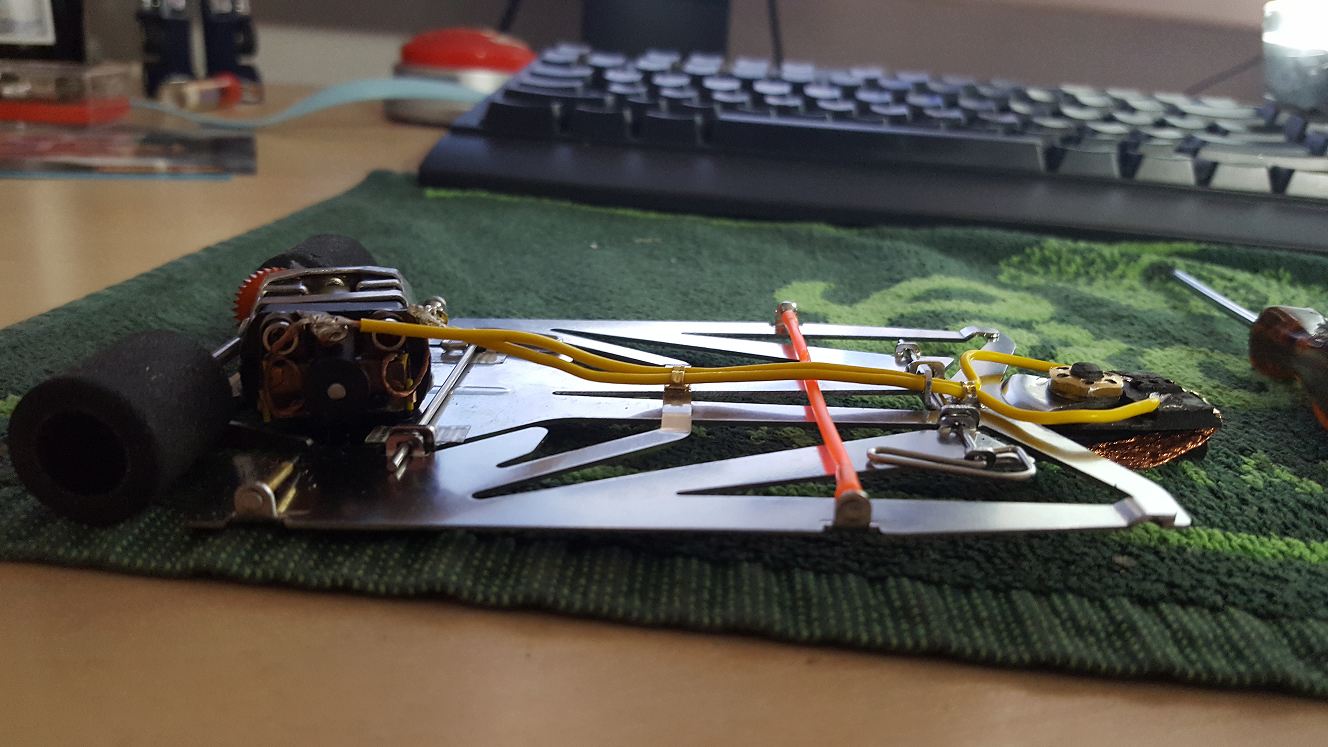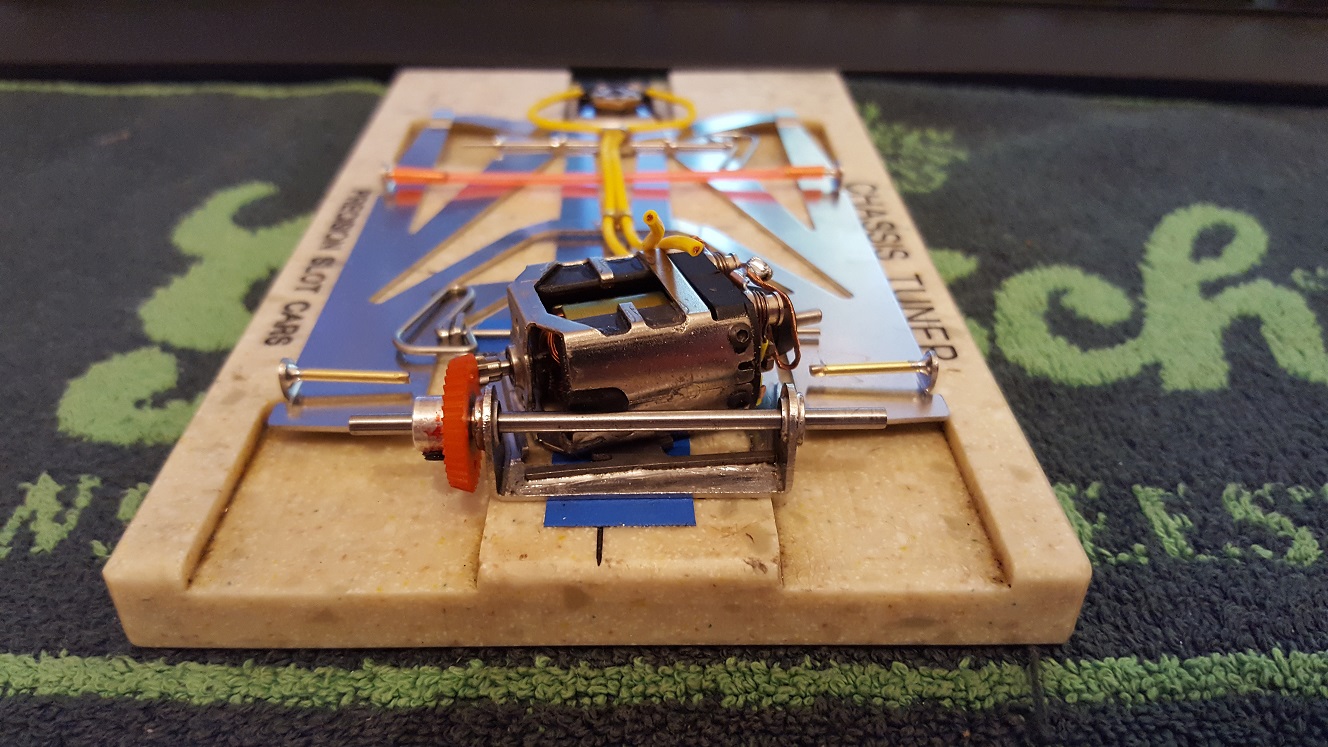JK C43 Aeolos chassis discussion
#1

Posted 19 January 2017 - 12:11 AM
I'll start with the first thing I did which was checking how flat it was straight from the box. I'm happy to report I only spent around 10 seconds making a minor tweak to get it pretty much spot on.
The guide tongue needed a great bit of effort to get it bent a few degrees up. While I strained my way through this process I unfortunately tweaked my wrist a bit. This is definitely a testament to the quality of the stainless used in this chassis.
The pan movement built into this chassis is quite dramatic. It remains to be seen if this is a good thing or if the addition of pan restrictions are in order.
My first build was destined to be a Group 10 GTP for use on our ultra fast 220 foot Engleman. I did not have a motor prepped so I had to build something. I have a very large surplus of Kelly D-cans and Blackmax mags we no longer race so I built up a sweet G2 with Kelly handwound 16d arm.
I use Kelly bushings on all my builds. If you plan on using Kelly bushings please note that if you forgo the use of upright bracing your heading for a stuck axle. Kelly bushings have a wide footprint and are easily seized with a hard enough wallshot.
I mounted a used Redfox Starfighter Long, some of my homemade treated tires, a redfox guide and anxiously waited for my next trip to Speedzone to crack off some laps.
My first few laps quickly showed me I over shot with hub diameter but ran very fast laps non the less. I was able to get deep into the 4.6's within the first 10 laps. My 2015 Nat's winning Group 10 GTP qualified in the 4.7's so I'm very happy with he results so far. With proper tuning I expect this car to break into the 4.5's .
In the next week I'll swap a known good motor from a fast X25 car that's race prepped and setup impeccably and move it to this chassis. I'll spend a few hours tuning it with rubber, bodys, and bite bars to see if there is any improvement with the use of this chassis.
- Tim Neja and tazman like this
#4

Posted 19 January 2017 - 04:54 AM
Why are you not using the JK supplied motor brace?
- fohoover likes this
#5

Posted 19 January 2017 - 05:12 AM
Sent from my iPhone using Tapatalk
Steve Meadows
#6

Posted 19 January 2017 - 08:10 AM
- John C Martin and CoastalAngler1 like this
You're never fast enough!!! 💯
Preparation leads to separation.
Success is never owned but rented, and the rent is due every day.
KELLY RACING 😎
#7

Posted 19 January 2017 - 08:51 AM
- John C Martin likes this
#8

Posted 19 January 2017 - 08:53 AM
Our rules allow 3" of piano wire bracing.
#9

Posted 19 January 2017 - 10:50 AM
Dave do you think the big wire passing through the front wire loom interferes with the movement of the front cross wire? I also noticed that the pan horns on your chassis appear to be sitting on the out riggers, have you tried the chassis set the recommended way as well? Which way do you think works best on the big track? You seem to like the rear brace mounted high, have you tried it the other way and if so why did you change? I always thought the weakest area of the uprights was at the bend, but I race GP12s and most all the braces are high the only difference is the uprights are soldered and not bent. By the way Danny also convinced me that big air gaps work very well, even with big diameter arms.
#10

Posted 19 January 2017 - 11:56 AM
For my initial test I built the car as JK intended it to be run so the pan is not touching the wings. There is maybe a .010 to .015 gap between the outriggers and the wings. On our high speed Engleman I've found that minimal pan movement is best.
I stopped mounting the motor mount brace flat a few years ago. Back to back testing showed faster lap times with a angled and stiffer motor mount.
The weakest area of the uprights is the bends. The forces exerted during a wallshot can only be absorbed by one upright if the brace is mounted with the cross peice down. With it mounted up and even with the axle both uprights share the forces.
I don't always run big gaps. Some arms work great with tight holes some dont. As with everything slotcar if you want to be fast you have to test test test.
- Tim Neja, fohoover and Samiam like this
#11

Posted 19 January 2017 - 07:20 PM
Squeeze the uprights towards each other and see....
Sent from my iPhone using Tapatalk
- MarkH likes this
Steve Meadows
#12

Posted 19 January 2017 - 11:11 PM
- Eddie Fleming and swodem like this
#13

Posted 20 January 2017 - 09:44 PM
Try to squeeze the uprights together with my brace method
Yes of course, you have created a box section, very strong
my point was related to the earlier comment "The weakest area of the uprights is the bends."
Steve Meadows
#14

Posted 21 January 2017 - 01:03 AM
- Rob Voska likes this
#17

Posted 21 January 2017 - 04:21 PM
Sent from my iPhone using Tapatalk
Steve Meadows
#18

Posted 21 January 2017 - 04:26 PM
Just a tweak i am trying to get the chassis more "stiff"
Robin Boer
Races @mrtu Fb:mrtu
#19

Posted 22 January 2017 - 04:23 PM
Robin Boer
Races @mrtu Fb:mrtu
#20

Posted 23 January 2017 - 04:23 AM
Sent from my iPhone using Tapatalk
Steve Meadows
#21

Posted 23 January 2017 - 06:49 AM
Then a tooth brush, warm water & soap.
#22

Posted 23 January 2017 - 09:34 AM
did the acid flux but i think forgot to clean it for grease after the ruffing/grinding of the surfaces.
Robin Boer
Races @mrtu Fb:mrtu
#23

Posted 23 January 2017 - 01:02 PM
Sent from my iPhone using Tapatalk
Steve Meadows
#24

Posted 23 January 2017 - 01:23 PM
If those chassis are made from a stainless steel, as most of the later JK's are, make sure your acid flux is compatible for working on SS.
I intend to live forever! So far, so good.
#25

Posted 23 January 2017 - 04:21 PM
Sent from my iPhone using Tapatalk
Steve Meadows





